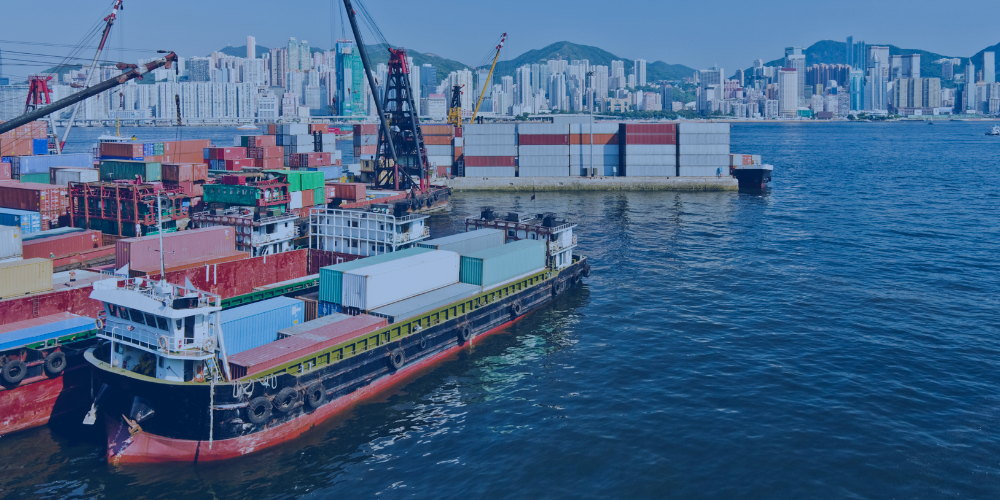Throughout 2023, U.S. recycled material exports were down 13% by value and 11% by quantity. Recycled material exporters had to contend with a series of trade obstacles last year including sluggish global economic and manufacturing output, rising U.S. interest rates, commodity market and foreign exchange volatility, and elevated geo-political conflicts that reshaped shipping patterns, resulting in a resurgence of container costs, surcharges, and other shipping fees late in the year.
Despite the overall downturn, the value of shipments increased in several key markets including Canada, Thailand, Hong Kong, Turkey, China, and Malaysia. Of note, China was the third largest export market for U.S. recycled materials by dollar value in 2023. U.S. exports of recycled materials to China increased 1.6% year-on-year in 2023 to $2.46 billion. Of that total, recycled nonferrous metal exports (predominantly copper and copper alloys) accounted for 90% by value, or $2.2 billion.
Stainless Steel
Among the major recycled commodities, U.S. exports of recycled stainless steel had the best performance in 2023, increasing 28.2% year-on-year to more than 517,000 metric tons (mt). India was the major driver of the increase, with shipments up 27.8% to more than 195,000 mt. Other export growth markets for recycled stainless steel in 2023 included Mexico (1.5% to 107 thousand mt), Taiwan (131.2% to 66 thousand mt), Italy (6,941.2% to 30 thousand mt), the Netherlands (731.9% to 27 thousand mt), South Korea (25.0% to 7 thousand mt), Finland (5,307.1% to 7 thousand mt), Spain (1,029.9% to 6 thousand mt), and Belgium (302.8% to 6 thousand mt).
Recycled Iron and Steel (excluding Stainless and Alloy Steel)
With a decline of 6.3% by quantity, exports of recycled iron and steel did not fare as well as stainless steel despite improved demand from Turkey, the largest export destination for recycled ferrous material. Reduced demand from key markets including Mexico (-7.6% to 2.8 million mt), Bangladesh (-12.8% to 1.4 million mt), India (-16.6% to 1.4 million mt), South Korea (-27.0% to 355 thousand mt) and others offset gains in growth markets like Taiwan (+4.7% to 1.24 million mt), Vietnam (+1.3% to 869 thousand mt) and Canada (+3.1% to 610 thousand mt).
Recycled Copper and Copper Alloys
Exports of recycled copper and copper alloys declined 5.1% to less than 870 thousand mt, reversing a two-year streak of rising overseas demand. More than 37% of these exports went to China. In terms of quantity, U.S. exports of recycled copper and copper alloys to China rose 12.1% from 291 thousand mt in 2022 to 327 thousand mt in 2023 making China the top export destination for this recycled material. By grade, U.S. exports of No. 1 copper excluding Bare Bright and “Other” refined copper outperformed, increasing 2% and 11%, respectively, in 2023. In contrast, overseas shipments of No. 2 copper reportedly declined 18% year-on-year in 2023 and exports of mixed solids and turnings, excluding insulated wire, decreased 37% last year.
Recycled Paper
Recycled paper exports saw the biggest decline among the major recycled commodities falling 18.0% to 13,122,847 metric tons for the full year 2023; the value of these exports declined 29.3% to $2.49 billion. Though India remained the number one country receiving recycled paper, it saw a decrease in exports of 30.8% to 2.5 million mt. This decrease was compounded by decreases to Mexico (-23.4% to 1.8 mt) and China (-12.8% to 644 thousand mt). Increases of recycled paper to Thailand (+15.49% to 2.3 million mt) and Malaysia (+13.3% to 1.3 million mt) helped reduce the sting but didn’t cover the void.
Recycled Aluminum
Helping to buck the trend of declines, recycled aluminum exports rose 2.9% in 2023 to nearly 2.1 million metric tons despite weaker demand from top destination India. Exports to Thailand nearly doubled to more than 224 thousand mt, accompanied by gains to Hong Kong (+20% to 160 thousand mt), China (+197% to 52 thousand mt), Taiwan (+9% to 46 thousand mt), Japan (+24% to 37 thousand mt), and Vietnam (+54% to 21 thousand mt).
“We’re still experiencing the same trade obstacles that we saw in 2023: higher interest rates, geo-political conflicts, increased shipping fees,” said ISRI Chief Economist Joe Pickard. “Many of those factors are highly unpredictable but as the numbers show, some areas of trade are increasing their imports and picking up some of the slack, providing new avenues for recycled material exporters. This year may be a case of hoping for the best but preparing for the worst.”










